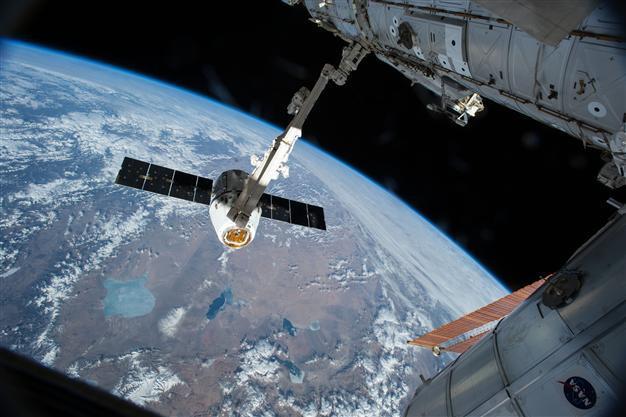NASA selects celestial tool box bound for Jupiter moon
WASHINGTON - Agence France-Presse

AFP Photo
NASA said May 26 it has chosen a trove of instruments to send to Jupiter's ice-covered moon Europa, as it press forward with its search for evidence the orb could support life.
The nine gadgets -- from cameras to radars to magnetic field gauges -- will be used to try to determine if Europa has an ocean beneath its glacial surface, as scientists have long suspected.
Europa, which is about the size of Earth's moon, could have twice the amount of water as our own planet, NASA said.
Scientists are keen to find out for sure, and the nine devices will be sent to Europa sometime in the 2020s.
"We're excited about the potential of this new mission and these instruments to unravel the mysteries of Europa in our quest to find evidence of life beyond Earth," said John Grunsfeld, associate administrator for NASA's Science Mission Directorate.
The instruments will be looking for a few key indicators to suggest Europa can in fact support life: salt water, a rocky sea floor, and energy and chemistry created by tidal heating.
"Europa could be the best place in the solar system to look for present day life beyond our home planet," NASA said.
The mission to Europa could come with a $30 million price tag, which the space agency has already requested in its 2016 budget.
The fact-finding trip would entail sending a spacecraft to Jupiter's moon, which would orbit Europa, getting as close as 16 miles from its icy surface at times.
Among the instruments in the celestial treasure chest are cameras and spectrometers to photograph the moon.
Another device, the appropriately named magnetometer, will measure the strength and direction of Europa's magnetic field, while penetrating radars will search for subsurface lakes, much like the ones beneath Antarctica on Earth.
Other instruments will search for recent eruptions of warm water and tiny particles.
The mission will also be on the look-out for water plumes from a subsurface ocean, which will help scientists study Europa's chemical makeup -- key to unlocking whether its environment could support life.
NASA scientist Curt Niebur said choosing the devices to send to Europa was a key step in the search for life on one of Jupiter's largest moons.
"This is a giant step in our search for oases that could support life in our own celestial backyard," said Niebur, Europa program scientist
"We're confident that this versatile set of science instruments will produce exciting discoveries on a much-anticipated mission."
The nine instruments were selected out of 33 proposed devices from NASA researchers last year.
Jupiter is a gas giant, composed mainly of hydrogen and helium, and is the largest planet in the solar system.
Its four biggest moons, Ganymede, Io, Europa and Callisto, can be seen with binoculars on a clear night.
